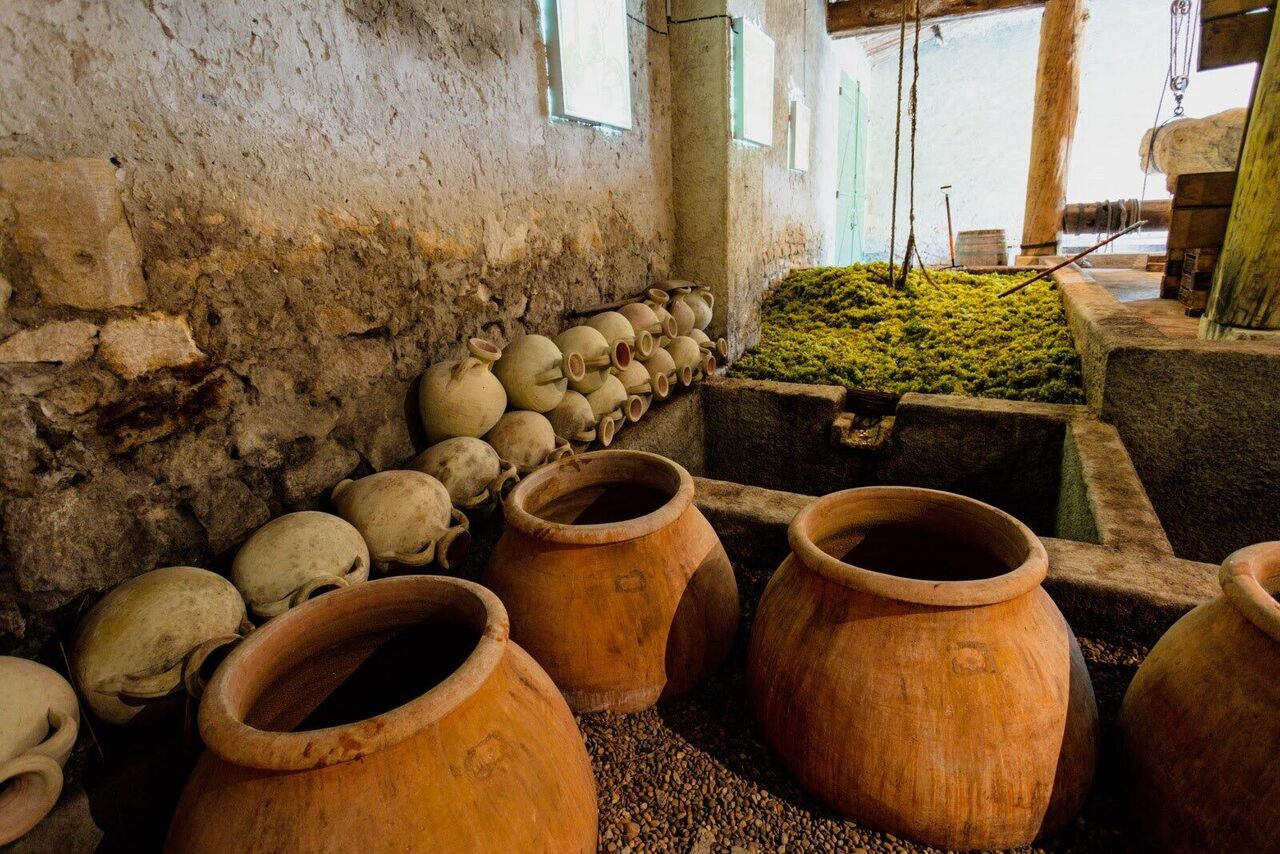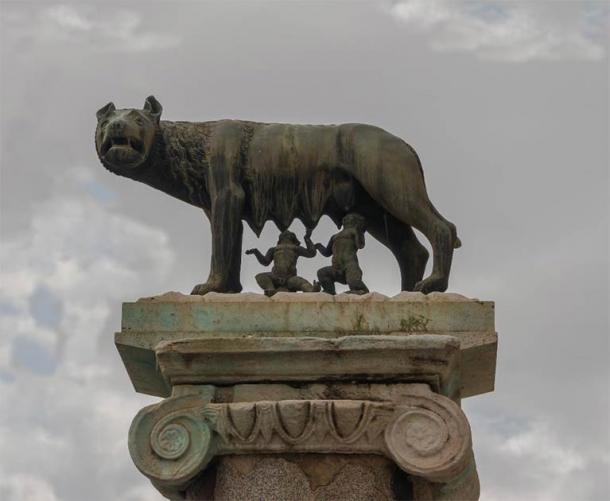
A few interesting finds today, from prehistory through Roman and Byzantine times, up to modern recreations which are always fun — especially when alcohol is involved!
We’ll start chronologically (or else I might lose you to the wine) with a 57,000 year wolf pup. A Canadian Gold Miner Finds 57,000-Year-Old Wolf Pup Still Covered in Fur, which is one of the most complete and oldest finds of this type.

One of the interesting points of the story, is the way this discovery was handled correctly — from the miners calling the palaeontologists, to the palaeontologists collaborating with Yukon first nations people.
Considering the amazing level of preservation, analysis of the remains shed a l lot of light about wolf populations over the ages and their diets. If you like wolves and palaeontology, you’ll undoubtedly enjoy the article.
Jumping forward to the end of the Roman (Byzantine) empire, a treasure trove from Tatar plunder was discovered in a Bulgarian fortress on the coast of the Black Sea. The 14th and 15th century were tumultuous, with repeated invasions from Tatars (Mongols) followed by Ottoman Turks into Asia Minor (Turkey) and the Balkans, eventually leading to the demise of the Eastern Roman Empire (aka Byzantium).
A small clay pot was discovered under the floor at the Kaliakra fortress, in a building which was burned down at the end of the 14th century. The pot contained almost 1,000 gold, silver, and bronze artifacts, including coins, rings, earrings, and buttons.
It gives a window not only into the disintegration of the Bulgarian empire in the face of waves of invading hordes, but also about trade networks in the preceding centuries. Both links contain quite a bit about the Balkan history in those eras.
Now back to our favourite Roman period. First, a discussion about Romulus, the mythical founder of Rome. This article about whether he really existed, is an excellent survey of the cases for and against the reality of the person.

More than that, it brings a good discussion about potential real-world explanations, and the links between mythology and archaeology. As noted, until the discovery and excavation of Troy in the late 19th century, that whole business was believed to be pure myth as well.
So while there is still no definitive archaeological evidence, the prevalence of foundation myths and the archaeological evidence that was found, suggests that there was certainly some person with a name sounding something like Romulus that was instrumental in establishing the early city. Just because the myths aren’t real in their entirety, doesn’t mean they don’t have a grain of truth.
I particularly love the way Steven Saylor has rendered those early myths in his book Roma. He’s done excellent research into the sources (the same as mentioned in the article), and have constructed a fictional “it could have been that way” story about the foundation of Rome and the early republic. (There is a sequel, Empire, on the period from Augustus to Hadrian, and another, Dominus, is scheduled for publication next year).
I love Saylor’s work, both this series and his Gordianus series. His writing is top-notch research as a background for charming characters and engaging mysteries. If, like me, you like this kind of novels as a springboard into rabbit holes, I highly recommend them.
A moment before we go one to the wine (bear with me here), let us build our appetite. Archaeologists uncovered an ancient street food shop in Pompeii, one with remarkable level of preservation and frescos.

I’m sure fans of Felix have come across the many fast food joints he stops on his endless traipsing around town. These thermopolia, hot-food bars, were the main source of warm food for many citizens: living in large insulae (apartment buildings), what with the risk of fire kitchens were a rarity.
Side note: This discovery inspired at least one person to try recreating the flavours using modern, easily accessible ingredients and method. You can read about it here: Archeologists just uncovered food stalls in Pompeii. I recreated a stew inspired by their findings. His article, though lacking in garum, has a good discussion about the various ancient ingredients and I really like his approach to modernising the dish (ie keeping sane) while trying to keep true to original flavour profiles.
Back to the excavated thermopolium. In places like these the owner would have large bowls of hot food from which to ladle portions (and you can probably guess the ingredient from the paintings under them). Preliminary analysis of the remains have revealed traces of pork, fish, beef… and snails.
I’m actually more surprised by the beef — snails were a common delicacy, raised especially; beef was never the favourite meat, with pork and sheep/goat being more common. Oh well, as long as you can douse it with fermented fish guts, right?
Ready for the wine yet?
Now we finally get to the promised inebriation. Apparently, some Winemakers Are Adding Seawater to Their Wines.
Wait, wat? First it was lead acetate, and now salt?
Well, yes. This is mentioned by ancient writers such as Pliny the Elder and Lucius Moderatus Columella. This, of course, led to modern vintners with a fascination of history down an experimental archaeology rabbit hole — something we love very much on this blog.

It’s not really surprising. We know that the Romans loved their wines with additives (see this recreation of conditum paradoxum). From honey and sugar of lead to make it sweet, spices from pepper and saffron to fenugreek, and herbs from lavender and bay leaves to crushed irises — all to play with the aroma of the wine itself. Add to that that the jars used to ferment the wine were sealed with pine resins, leading for a taste closer to Greek retsina, and you’d arrive at a very complex flavour.
The salt actually serves a similar purpose. Sealing the jars was to prevent oxygenation and thus prevent the wine from spoiling. The salt from the seawater — taken from calm seas away from shore to ensure low levels of pollutants and good salinity — would act as a preservative and increase the shelf-life of the wine. Especially important when you consider the vast trading networks of the Roman empire and how far wine was shipped.
Unsurprisingly, adding a pinch of salt to wine will help round up and make flavours pop, just like in cooking. When we season a dish with salt, pepper, and sugar, we’re not changing the the flavour profile so much as we’re bring contrasting and balancing flavours to the front. The same with wine, apparently. A pinch of salt goes a long way, and the touch of salinity helps bring forward the grapes’ sweetness, the acidity, and the bitterness of tannins.
Gives a different view on Homer’s “wine-dark sea”, eh? The old poet was a lush.
Side note: other modern wine makers are trying to age wine under the sea, but that has more to do with sunken ships than Roman times.
So, who’s joining me in adding a pinch of salt to their next glass of merlot? No one? Y’all are just sitting there looking at me to take the first sip? OK then… 😄
Adding a bucket of sea water to a vat of wine is something that will likely make it into the next Felix novel. In true Egretian fashion, besides earning some snide commentary from Felix, it will likely involve some pretentious gourmet discernment, specialised incantations, and general mayhem.
Prosit!
Curious why I collect all this trivia? Come see for yourself on the short stories and free novella!

Enjoyed this issue of your blog.
On Tue, Feb 9, 2021 at 18:01 FELIX THE FOX MYSTERIES wrote:
> Felix the Fox (Assaph Mehr) posted: ” A few interesting finds today, from > prehistory through Roman and Byzantine times, up to modern recreations > which are always fun — especially when alcohol is involved! We’ll start > chronologically (or else I might lose you to the wine) with” >
LikeLiked by 2 people